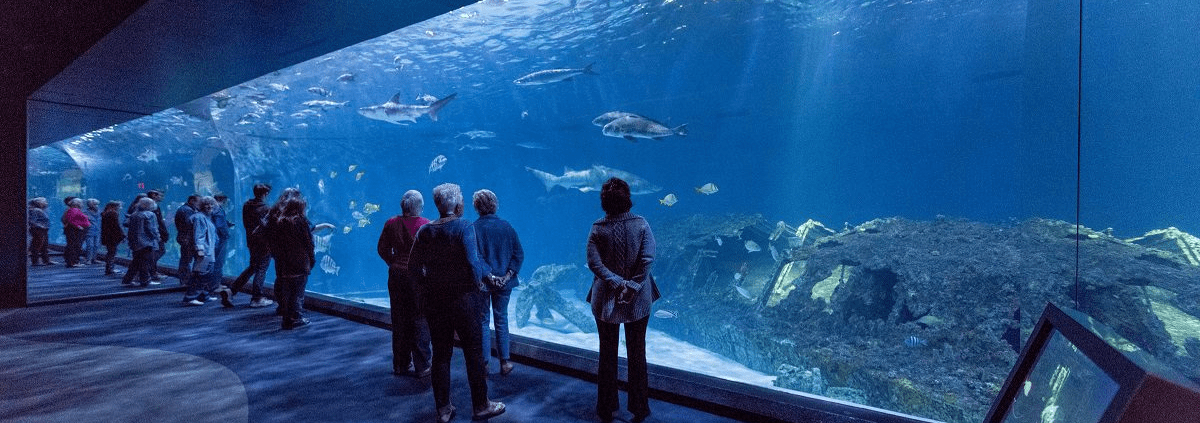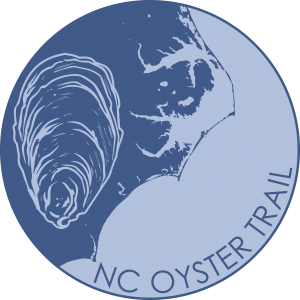Work begins on exhibit showing oyster-human connection
by Jennifer Allen on June 26, 2023 | Reprinted from Coastal Review
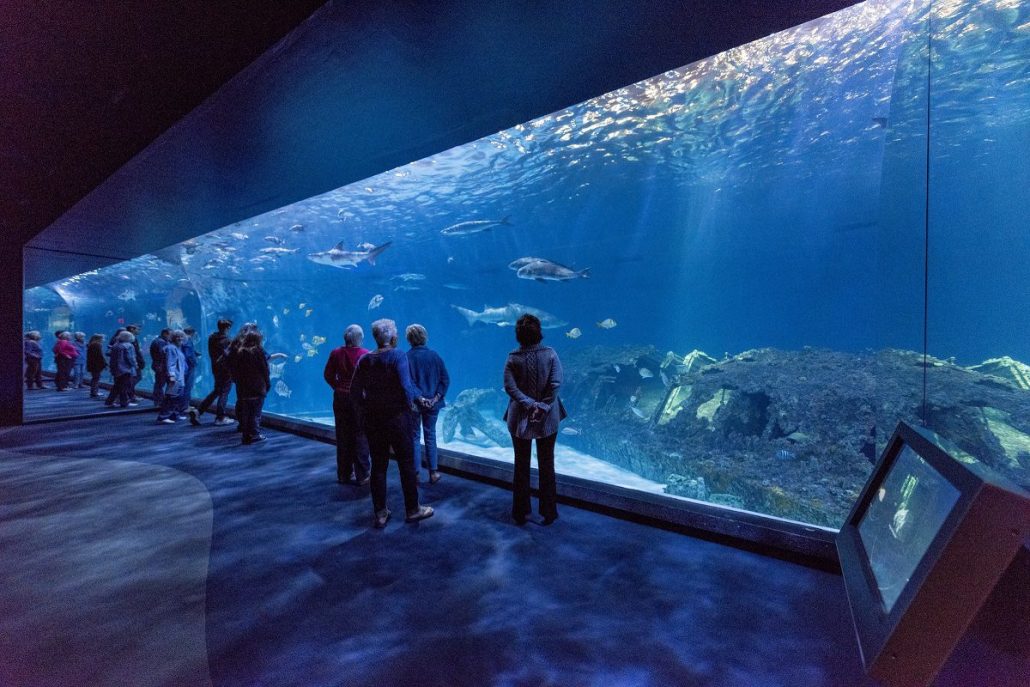
Construction began this spring on an interactive exhibit to educate the public on the importance of oysters at the North Carolina Aquarium on Roanoke Island.
Aquarium Director Larry Warner told Coastal Review that if a grant through the Institute of Museum and Library Services, or IMLS, comes through, the plan is to open the exhibit they’re calling “Fish Filter Food: The Human Oyster Connection,” in early summer 2025.
Warner said they’ll know if they received the grant in September.
The grant is a two-year proposal that includes funds to support formal evaluation, Warner explained. “This said, our hope would be to open the exhibit by early summer of 2025, with evaluation occurring over that summer and closure of the grant process in September of 2025.”
Seed money to get the project started came through the North Carolina Coastal Federation, which has partnered with the aquarium on the exhibit, through two National Oceanic and Atmospheric Administration grants.
“We are requesting an IMLS grant that would be a combination of federal funding with a 100% match provided by the North Carolina Aquarium on Roanoke Island,” he said. “We will continue to seek additional funding from other resources as well to round out what we need.”
During the 2023 Oyster Summit in Raleigh, Warner told the crowd of about 200 that Coastal Federation staff, after receiving the federal grant funds, approached the aquarium in 2020 to look at the possibility of creating an oyster exhibit.
The Coastal Federation, which publishes Coastal Review, hosted the two-day symposium in May.
Coastal Federation Oyster Program Director Erin Fleckenstein said that the partnership offers a way for people to learn about oyster habitats and the importance of oyster sanctuary work through interactive, hands-on engagement.
The aquarium has roughly 330,000 annual visitors, and “is a great venue to get messaging out,” Warner explained.
The aquarium is already committed to promoting oysters as part of the North Carolina Department of Natural and Cultural Resources, and as part of the N.C. Oyster Trail, which lists the Roanoke aquarium as an educational stop.
Because of this, the North Carolina Aquarium Society is acting as a liaison through an agreement with Coastal Federation “to help us make this (exhibit) happen.”
Though the pandemic shutdown caused some delays, Warner said the project was not derailed. In 2020, aquarium staff, coastal federation staff and a stakeholder group began working together.
After several brainstorming sessions – and lots of ideas – Warner said the ideas were distilled down to a “very simple message to get this out to people who come through the aquarium on a single-day basis.”
The exhibit, which will start in the aquarium’s Wild Wetlands area and wind through to the Ocean’s Edge area.
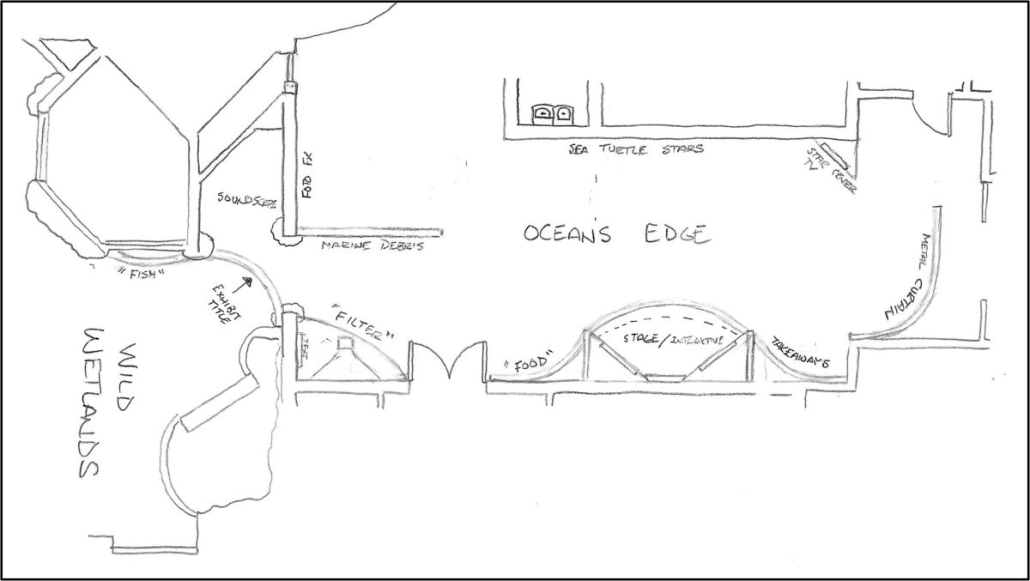
The exhibit focuses on four main topics, with each of the following represented in a specific area: “Fish,” or how oysters interconnect in the aquatic and terrestrial food chain; “Filter,” featuring oysters and the benefits they provide to the marine environment; “Food,” or oysters and the benefits they provide to humans; and “Guest Actions”, or how you can help.
In the aquarium’s Croatan exhibit, Warner said the plan is to add a replica inside that habitat of the process of oyster reef restoration, where there will be information defining oysters and oyster reefs.
The exhibit will contain tanks filled with the animals found underwater around oyster reefs accompanied by an activity to identify the different types of creatures.
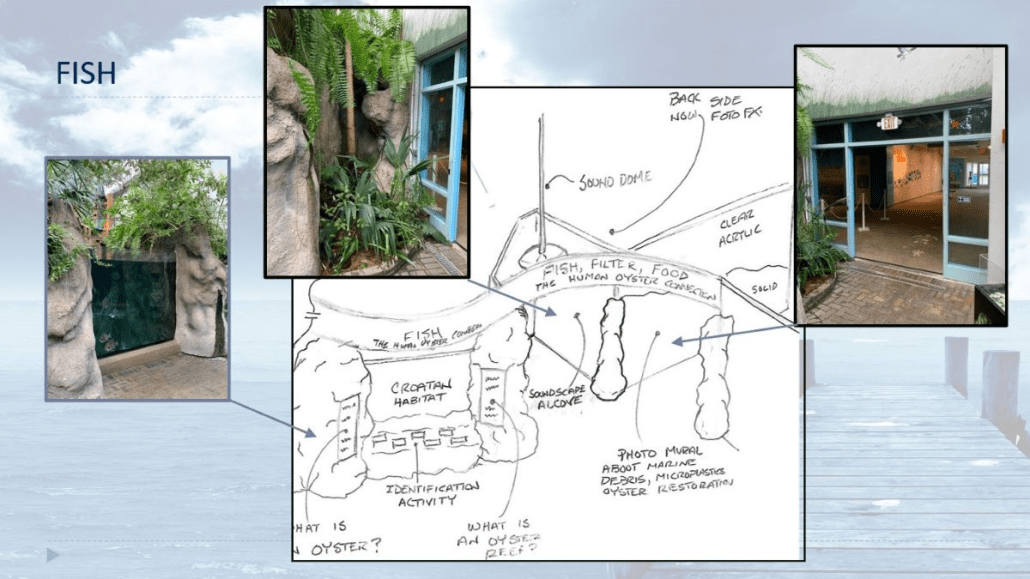
One area Warner said they’re especially excited about is the filter section.
“Because we can’t actually put an oyster display to show the oysters actually filtering the water, we’re going to use digital technology,” Warner said. There will be a reef projected on the wall that simulates how oysters filter water.
Plans also include a hands-on display of a mural with an oyster reef and audio samples of underwater sounds, a section on how microplastics and other marine debris can affect oyster reefs, and videos with messages from area scientists and professionals about oysters.
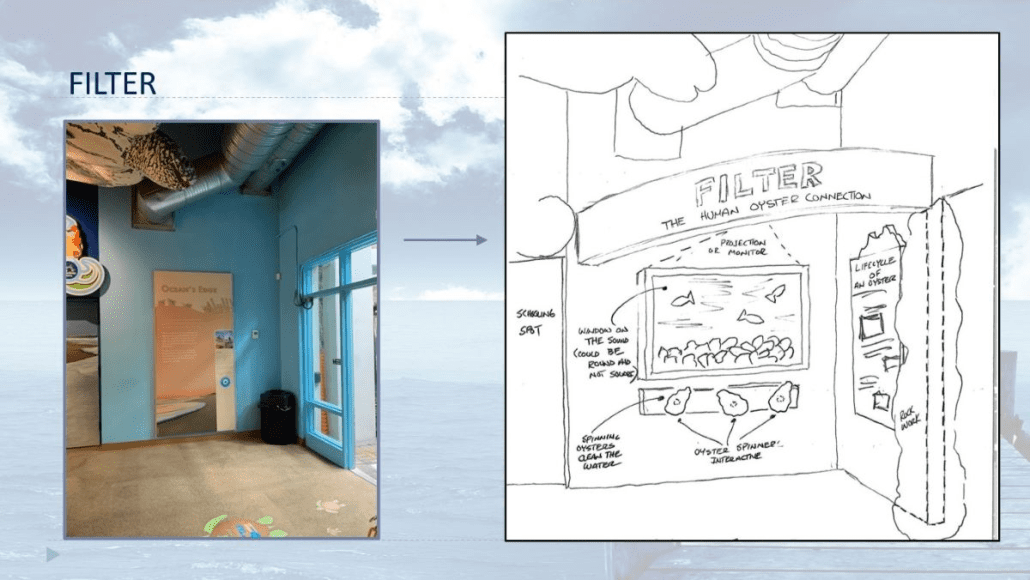
Warner said in a recent interview that since the Oyster Summit took place there have been more detailed discussions “regarding many of the wonderfully planned, hands-on interactives with outside vendors who can make them the best they can be. As with everything, it seems, post-pandemic pricing for this type of design work has increased significantly.”
As a result, the new challenge will be seeking additional funding to round out the exhibit, “but with the tremendous excitement shared by many who have seen the designs, I’m quite hopeful we’ll be able to secure the additional funding,” he said.
Warner explained that the process to create the exhibit has “been amazing. There are so many dedicated individuals involved who are passionate about oysters and their role with the coastal ecosystem, environment, and economy.”
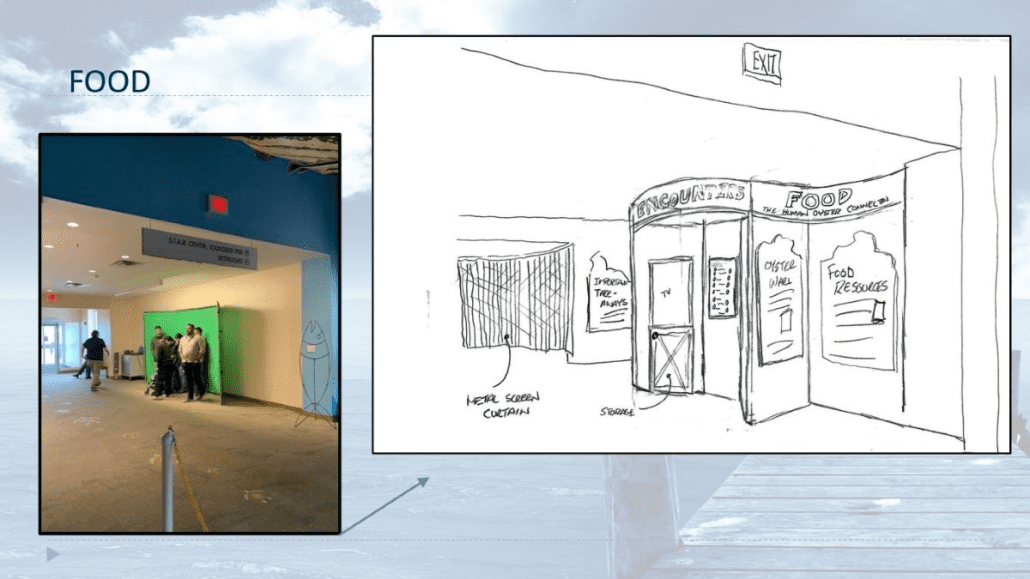
The process started with stakeholder meetings to determine key educational points.
“Designing an exhibit from concept to completion is never a fast process, particularly if you want to make sure you’re hitting the right educational points without overwhelming the audience, all the while making it fun, interactive and engaging. COVID was a definite impact in this process, as it did slow the process down considerably,” he said. “The silver lining with COVID, however, was that it gave us more time to examine how we approach the messaging – not to mention it has allowed time for additional programs and support to develop in the overall oyster arena.”
If the Institute of Museum and Library Services funding comes through, Warner said he plans to propose presenting the exhibit during the Association of Zoos and Aquariums, or AZA, annual conferences in 2024 and 2025, and he hopes to write an article about the exhibit for varying state and regional publications, as well as AZA’s publication.
“I have also already been approached by the National Aquarium in Baltimore about our exhibit with interest in potential educational collaboration. One of the nice qualities about exhibits is that if they prove successful, there is always the opportunity to create a scaled-back traveling edition or duplicate the exhibit at other facilities,” Warner said. “And finally, we want to make sure that our commitment to the N.C. Oyster Trail’s education component supports the importance of informing the public on the importance of oysters.”

